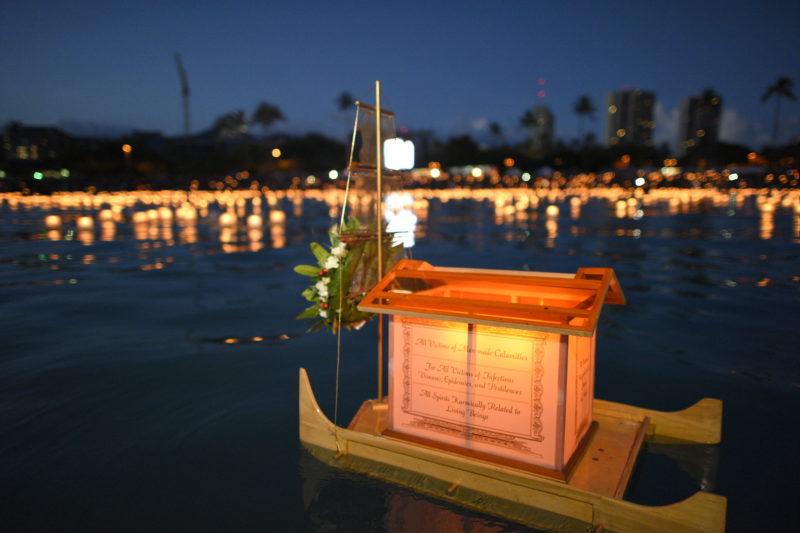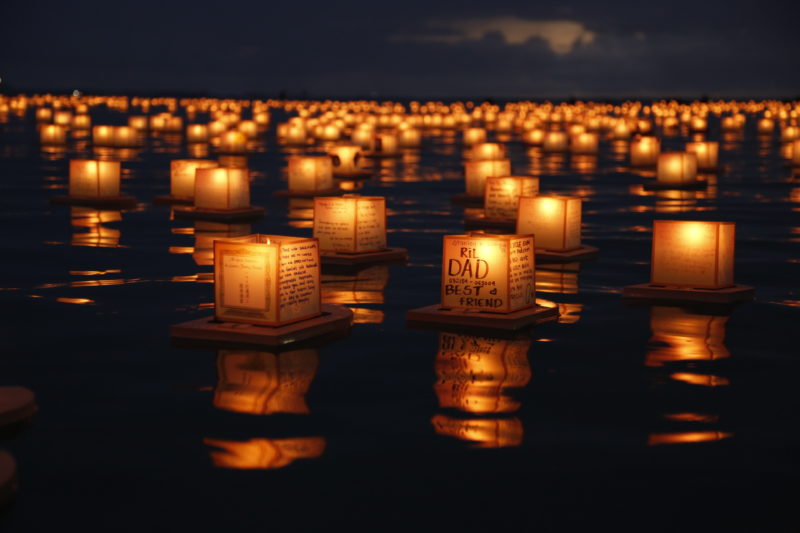This post may contain affiliate links, which means I'll earn a small commission if you purchase something through these links. You won't pay any extra; instead, you'll be helping Aloha With Love to thrive. Thank you! Learn more.
--
The words “crying” and “Hawaii” wouldn’t normally be caught hanging out together in the same sentence, but I promise this won’t be a damper to your vacation. Instead, the lantern floating ceremony on the island of Oahu may just lift those burdens and give you some real closure for those loved ones that you’ve had to say farewell to.
It’s an eerie and gorgeous sight to see the warm glow of thousands of lanterns lighting up a black sky and silent waves. Each lantern has handwritten messages from family, friends and beloved ones dedicated to those who have impacted our lives.
Whether you’re a participant or a bystander, prepare for tears to be shed. People of all religions and backgrounds are welcome as this is a ceremony for all people worldwide. Silence, prayer and a heartfelt message of love echoes overseas from the island of Oahu on Memorial Day.
Aloha with love,
Amy
The Lantern Floating Ceremony And Her Holiness Shinso Ito Of Shinnyo-En.
One of the highlights of the lantern floating ceremony happens on its pristine white stage. Her Holiness Shinso Ito makes her appearance in a spectacular kimono known as kesa to officiate the ceremony. As head priestess of Shinnyo-en, she holds the highest rank of daisojo and leads an esoteric Buddhist school with hundreds of temples and training centers worldwide.
Since the very first lantern floating ceremony held in 1999, Her Holiness has visited Hawaii every year since to help us commemorate and honor those who have passed. Her Holiness’ father, Buddhist Master Shinjo Ito, was the original founder of Shinnyo-en.
In this year’s lantern floating ceremony (2018), Her Holiness entered the stage with a soft and gentle smile holding a traditional Japanese fan in one hand, and an attendant carrying a large, bright red umbrella following in her footsteps. Regardless of why you choose to come to the lantern floating, it’s a unique experience to see Her Holiness and hear her deliver her message.
If you’re interested in learning more about Shinnyo-en, check out this great introductory book that showcases various personal experiences of how their lives were changed when they began their journey through Shinnyo-en.
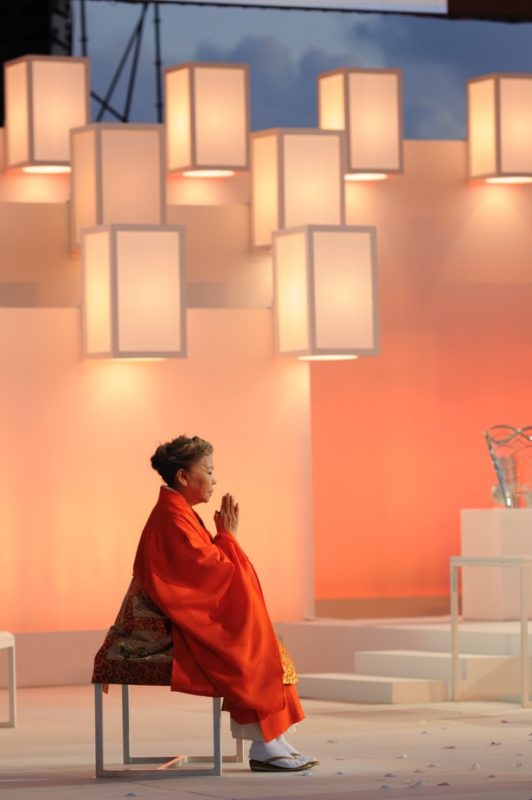
Although Her Holiness does understand English, Japanese is much more comfortable for her and her speech is translated on large monitors all over the area. I love that her Father was “techy” (he was an aeronautic engineer!) and used technology to spread the word of Shinnyo-en. This link to the modern world and progression of technology has remained and you’re able to see her translation on the Lantern Floating Hawaii website.
The story of Her Holiness Shinso Ito is an interesting one. Here’s an article in MidWeek (a local newspaper focused on community) with an in-depth interview that’s a fun and pleasant read.
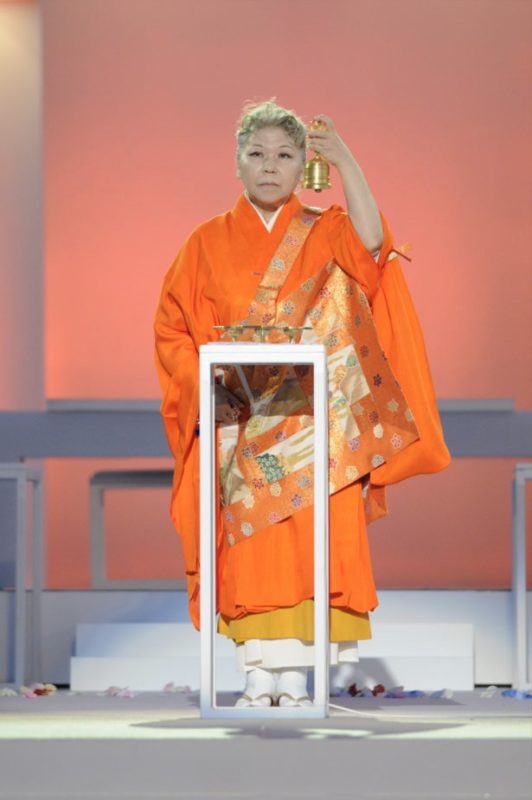
Where Hawaiian And Japanese Cultures Come Together.
There’s a lot that happens before the lantern floating actually begins. The taiko drummers always give a magnificent performance with their powerful strokes and sheer confidence in their routines. It’s uncommon to see/hear the Japanese bamboo flute played live (except during obon festivals), so now is a good a chance as any to come and hear its lonely wail with the booming drums.
Local Tip: Interested in more Japanese culture in Hawaii? Try the Okinawan Festival for food, music and performances.
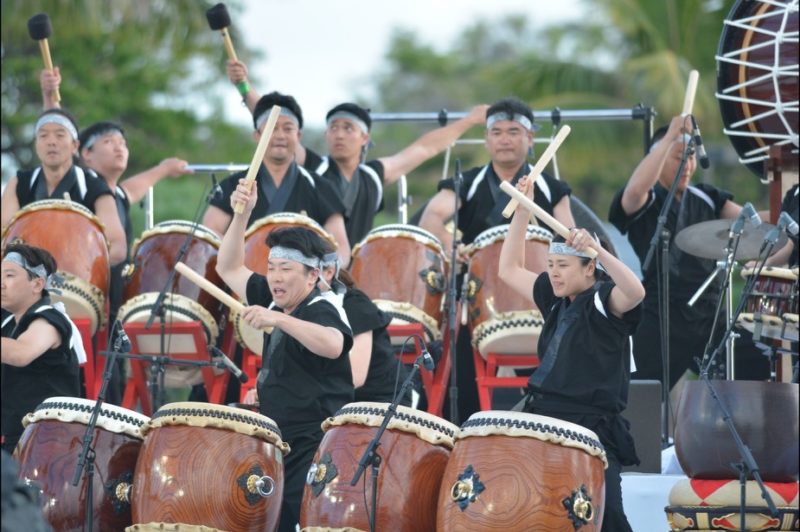
As with most special occasions that involve Hawaiian traditions, the ceremony begins with the blowing of the conch shell. You may see this at a luau before the dancing begins.
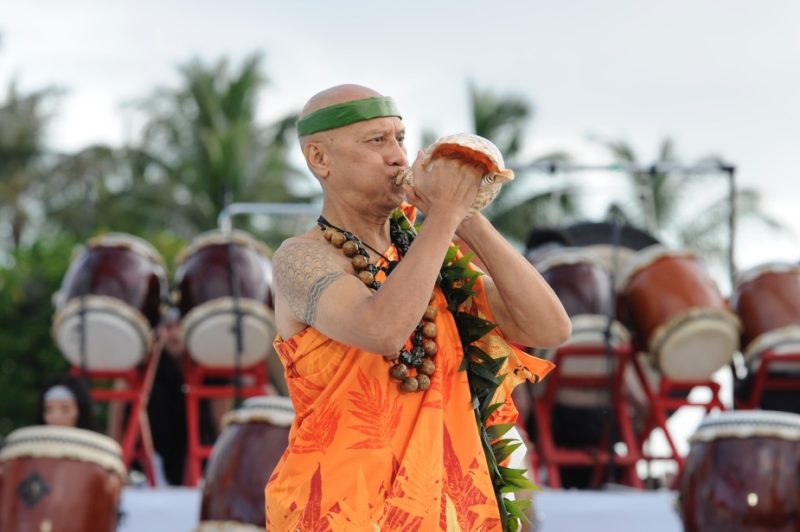
And what would a large-scale event like this in Hawaii be without some hula dancing? Here is a chance to see traditional hula pull out all its stops. Fresh leis, traditional Hawaiian instruments and authentic chants will all showcase on this stage.

The Sky Darkens, The Lanterns Glow.
Just as the light begins to fade from the sky, the blessings begin. They begin with Her Holiness at centerstage as she blesses the ceremonial grounds. Wreaths are placed on the main lanterns, rice and water are offered, and flowers are spread leading a trail out to sea.
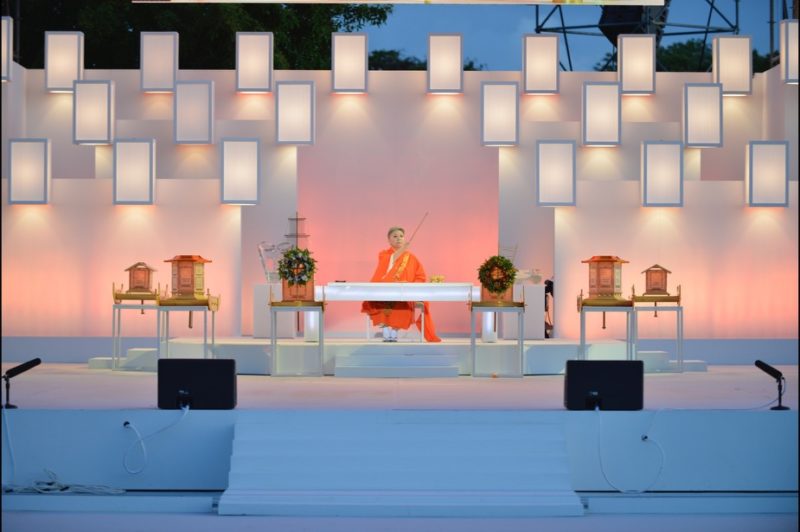
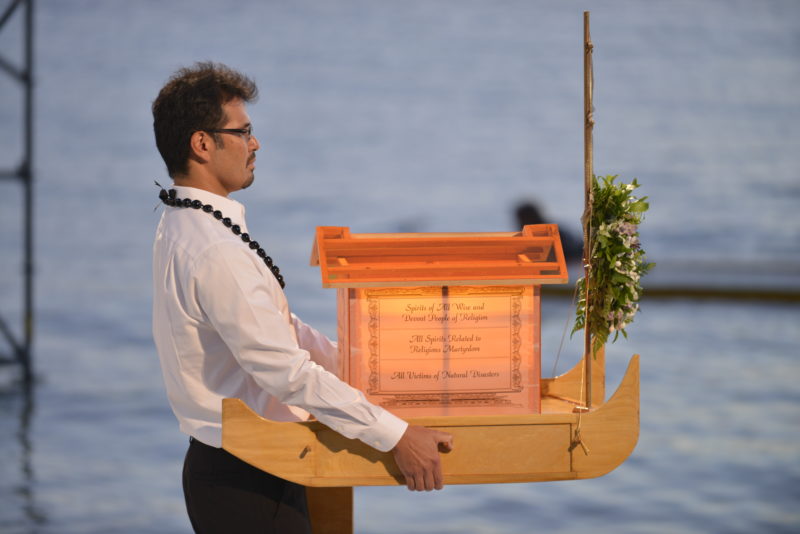
A loud ceremonial bell will ring signaling for all lanterns to enter the water. The crowd eases forward into the water, some with smiles, most with tears, but all leaving with a sense of peace and calm.
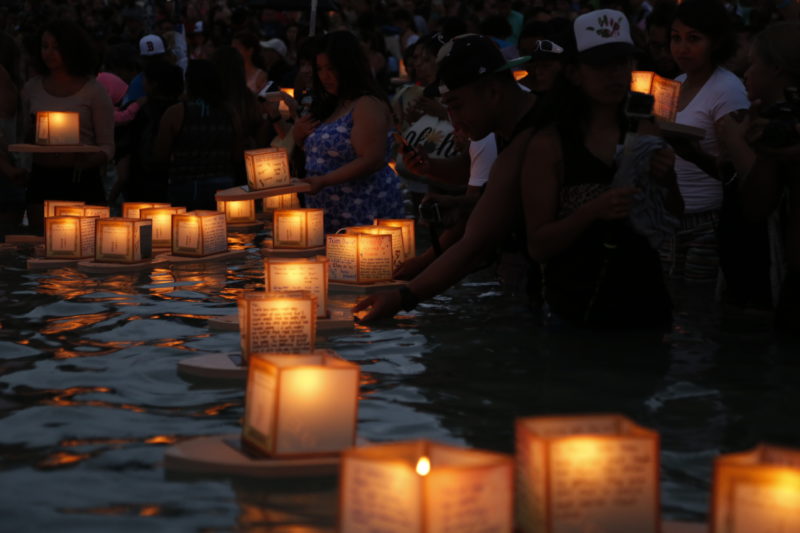
Even the canoes carrying lanterns belonging to those who aren’t on shore begin to paddle out and release their lanterns.
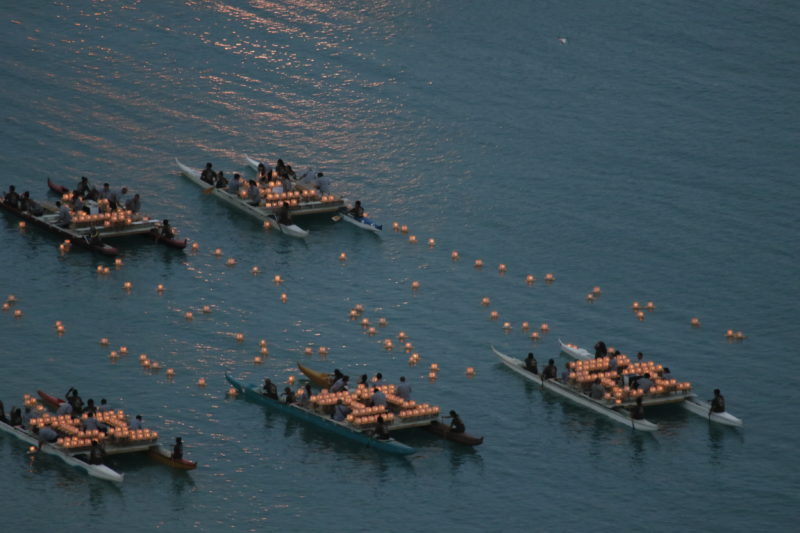
It’s a magical sight to see the number of lanterns grow from a few to thousands upon thousands of glowing candlelights. When all natural sunlight sinks below the horizon, the lanterns glow like orange fireflies wafting in the waves.

Here’s How To Get Your Lantern For The Next Lantern Floating Ceremony.
The Lantern Floating Ceremony is free to attend and the lanterns themselves are available at no charge on a first come, first served basis on the day of the ceremony. Keep in mind that this means long lines in the sun if you plan on standing in line later in the day.
Local Tip: The last I heard was that 7000 lanterns were used in 2017, with 50,000 attendees in 2018. In order to meet demand as much as possible, only one lantern per family is allowed.

Once you receive your lantern, you’ll be able to write your messages, attach photos and put together your lantern – everything will be provided to you along with instructions.
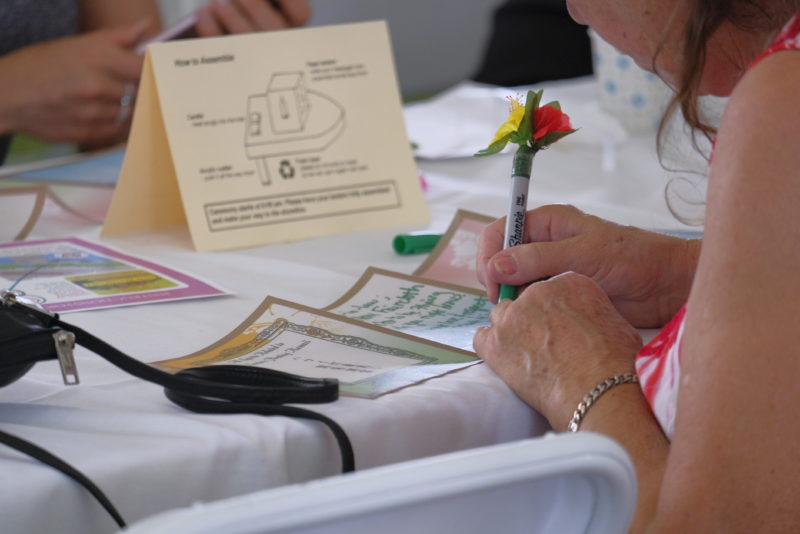
If you won’t be on shore to float your lantern, you can still arrange to have it put on a canoe where it will be lit and floated for you. This is a great option for those who are physically disabled or would rather not be in the crowd of 50,000.
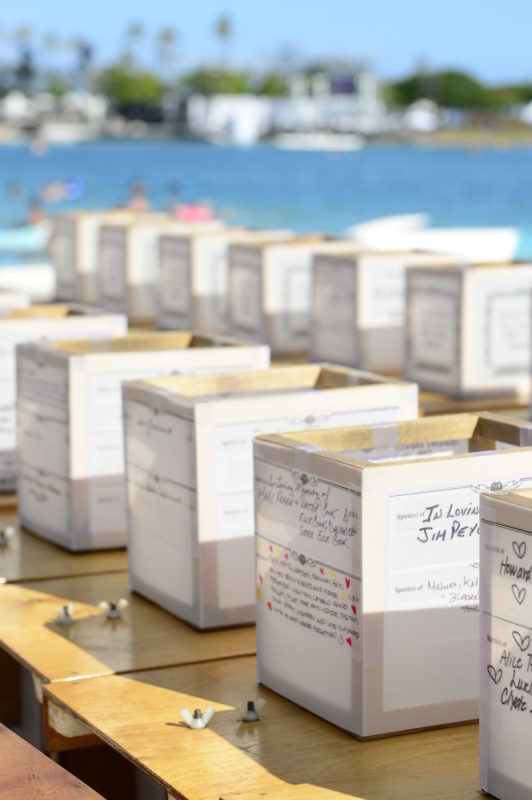
7000 Lanterns, 50000 People.
In last year’s lantern floating ceremony (2017), 7,000 lanterns were sent floating so you can imagine the immense beauty of the night when only the glow of thousands of candles remain. The lanterns are disassembled respectfully and refurbished for the next year so they’ve been gradually increasing.
For more information on parking, volunteering, FAQs, lanterns, participation, etc. visit the Lantern Floating Hawaii website.

This year’s lantern floating ceremony (2018) was held with 50,000 people in attendance on Ala Moana beach park, which is no small feat. Bathroom lines are long, traffic is bad, and the wait for shuttles can be longer than expected. But the experience is amazing. There’s a solid feeling of unity, and it isn’t a “push and shove” event that you would normally expect it to be. Everyone is content to wait their turn and no matter where you stand, the view is absolutely stunning.
Keep in mind that since this is a ceremony and not for profit, there are no food trucks or stalls except for the city-approved sellers (there are only 2 on either side of the beach park – L&L BBQ). If you know you’ll be hungry during the ceremony, it’s best to eat something before you go or bring some munchies with you.
Local Tip: Ala Moana beach park is a wonderful place to spend a beach day. It’s a popular spot for people to get there early, find some parking, and set up their pop-up tents and BBQs while they play in the water, sleep in the shade, play games and cook food all day. It’s not a bad way to spend a whole day in Hawaii.
There are still several ways to view the ceremony without being on shore. One of the most unique ways is by surfboard! Take your board (or paddleboard) and find a good spot as the lanterns float toward you and out to sea. The water is usually calm in this area so you won’t have to worry about waves or keeping your balance.
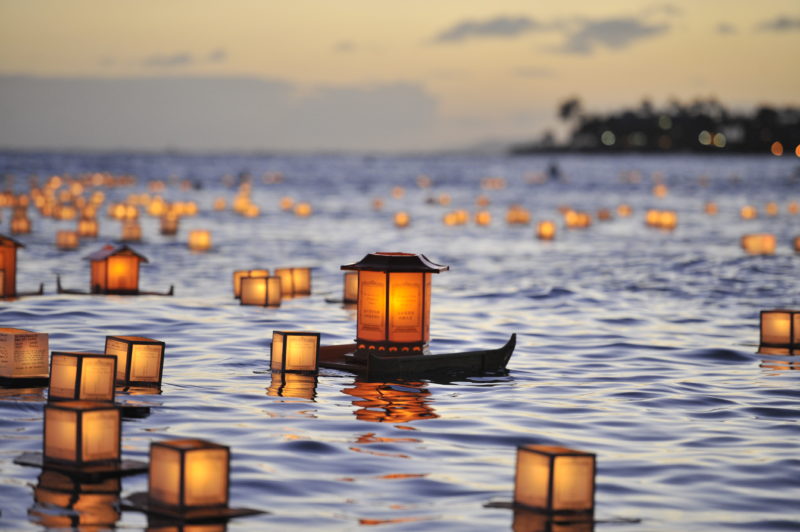
If you’d rather not be on the beach with the crowd, the ceremony is streamed by a local news station and you can even watch it after the ceremony has ended if you’ll be busy during that time or are in a different time zone.
Local Tip: You can also head toward the Ewa side of Ala Moana beach park (opposite of Waikiki) where there will be less people. However, you will also be farther away from the stage.
